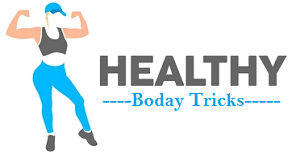Muscle growth is a complex physiological process that requires a lot of time and commitment. Unfortunately, there is a lot of misinformation about the best way to gain muscle. Follow our 11 scientifically proven tips for fast and effective muscle gain!
What is the best resistance for building muscle?
Contrary to popular belief, the mere fact of lifting heavy weights will not necessarily turn you into a hulk (this will require adding a good surplus of calories). While lifting weights will speed up the process of building muscle, it’s not always easy or affordable to join a gym or invest in home fitness equipment. So here’s how to build muscle both ways: with heavy weights or light resistance and with body weight.
In reality, it is quite possible to strengthen your glutes , strengthen your trunk , your pecs and your back with bodyweight exercises ( or exercises with a resistance band ) that you can at home, quietly without leaving your living room.
The key is to “feel the burn”. You should push the reps and sets until you feel the muscles are engaged. Unlike weight training, where you can add resistance to suit your needs, training with bodyweight and resistance bands is static resistance. To increase the intensity, you must therefore increase the volume. You may also need to train more frequently during the week.
Benefits ? You may have less pain after bodyweight or resistance band training than with heavy weights. In addition, this type of training is safer since it is a closed chain exercise and the impact is often less.
What is the ideal number of sets for you ?
A set is the number of times you perform a certain movement (repetitions) and its recovery period. For example, 3 x 8 push-ups is 3 sets of 8 push-ups each. The rest interval is usually 1-3 minutes between sets (more on this later).
There are big differences depending on your fitness level. During the first few weeks of training, beginners generally show the same muscle gain with single-set workouts as they do with multi-set sessions. More advanced athletes , on the other hand, will obtain better results with multiple sets sessions because the training stimulus caused by a single set will be far too weak to cause the muscles to begin their adaptation process.
How many reps per set ?
The number of reps per set depends on the exercise and fitness goals. For example, it’s reasonable to do 30-60 jumping jacks, but 30-60 push-ups would be too much for most people.
Stick to a range of 6 to 12 reps of the same exercise if the goal is to build muscle. Once you can do that many reps of an exercise with good posture, go up to 20 reps for exercises like push-ups, rows, squats, etc. Once you can do 20 reps with good technique, add another set and reduce the reps to 6-8 reps per set. Add reps again when you can complete all sets with good technique.
Should i rest between sets?
If you’re looking to build a single muscle by doing multiple reps of the same movement, rest between 60 seconds to 3 minutes between each set. You’ll know you’ve rested enough when you feel like you can attack the next set feeling refreshed. The idea is that by giving yourself time to rest, you’ll be able to go further each time.
However, you can superset multiple muscle groups at once. Superset involves training one set of muscles or one side of the body, then training the opposite muscles with little or no break in between. For example, you do a set of push-ups and go straight to a set of supermans. Both exercises oppose the same muscle group (think pushing and pulling movements).
Circuit training and supersets also add an aerobic component to your strength training [ 5 ] . Circuit training consists of skipping recovery intervals and moving directly to the next exercise. This training method works the cardiovascular system more than strength training alone. Circuits and supersets are a great choice if you’re relatively fit and looking to build muscle while losing fat!
How many workouts each week?
Body aches associated with strength training are known as DOMS (Delayed Onset Muscle Soreness ). It is very important to resume or start strength training very carefully. Aim for the minimum number of reps and sets if you haven’t weight trained in a long time (or even ever done so). Body aches can limit your ability to train multiple times or lift heavy weights, which is counterproductive to your goals. Make sure you understand the benefits of overcompensation and the difference with overtraining.
DOMS can occur one to two days after the first strength training session and usually gets worse by the second day. Even if the pain persists, another session of weight training two to three days later can help reduce these aches. A simple walk is enough to circulate the blood, oxygenate the muscles and reduce the accumulation of lactate.




